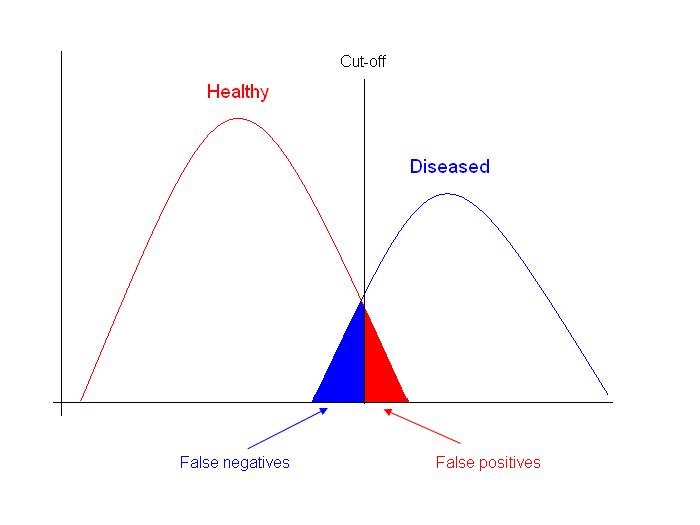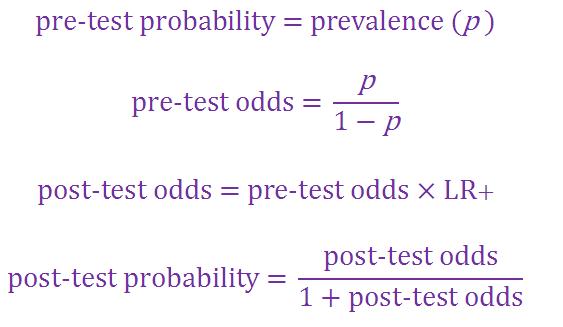Evaluation of diagnostic tests
Introduction
Decisions made following diagnostic testing are usually dichotomous e.g. treat or do not treat the animal, therefore diagnostic tests are usually interpreted as dichotomous outcomes (diseased or non-diseased). In this case, if a diagnostic test is measuring a continuous outcome e.g. antibody titre then a cut-off for classifying animal’s as positive or negative must be selected. The figure below shows that whereever the cut-off is selected there is usually some overlap between results i.e. some diseased animals will have the same value as non-diseased animals and resulting in some false-positive and false-negative results.
Interpretation of diagnostic tests
Likelihood ratio
Post-test probability
Before performing a diagnostic test a veterinarian usually has an idea of the likelihood that an animal has a disease, usually based on the levels of the disease in the population. The probability that an animal has a disease before a diagnostic test is performed is termed the pre-test probability and is usually the prevalence of the disease in the population, but can be modified depending on other factors e.g. whether the animal is showing symptoms of disease, whether certain risk factors for disease are present. Once a diagnostic test has been performed this probability can be modified to incorporate the results of the diagnostic tests to give an overall probability that an animal has the disease i.e. post-test probability. This is carried out as follows:


